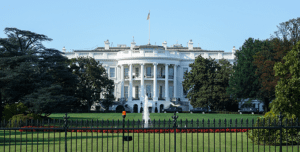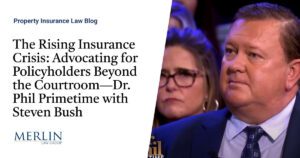Mayo-backed nonprofit Civica Rx plans to make low-cost insulin starting in 2024 – Star Tribune

A nonprofit group backed by hospital operators, including Mayo Clinic, plans to sell low-cost insulin by 2024 in yet another push to lower prices on a crucial biologic medicine for many people living with diabetes.
The group, called Civica Rx and based in Utah, plans to produce what are known as “biosimilar” versions of three insulins now on the market. It will set a maximum recommended price for consumers of no more than $30 for a vial and no more than $55 for a box of five pen cartridges.
Patients today might pay much more out-of-pocket for insulin in those quantities, advocates say, if they lack insurance or have coverage that comes with high deductibles.
The nonprofit group argues the affordability problem stems from a lack of transparency with current insulin prices and how money gets split among companies in the pharmaceutical supply chain.
Those corporate actors range from pharmaceutical benefit managers (PBMs) and drug manufacturers to health insurers, medicine distributors, pharmacies and employers, said Martin VanTrieste, the president and chief executive at Civica Rx.
“Even with some introduction of biosimilars now to the market, manufacturers and PBMs are incentivized — as all for-profit companies are — to make money off their products,” VanTrieste said.
“So, even if they lower the price and provide pass-through rebates, the costs of insulin remain high and unattainable for millions of Americans, especially for those who are uninsured or underinsured.”
Trade groups for companies along the pharmaceutical supply chain push back on suggestions that they’re to blame for high insulin costs. They sometimes point to other players along the continuum. Meanwhile, state and federal lawmakers continue to adopt or consider laws that try to deliver savings for patients.
For Mayo, tackling insulin costs via Civica makes sense because it creates a stable and affordable supply to prevent what can seem like inexplicable problems with access to the biologic, said Dennis Dahlen, the chief financial officer at Mayo.
Civica was launched in 2018 to manufacture dozens of sterile injectable medications that hospitalized patients used routinely for many years. Despite that longevity, medical centers found they regularly were struggling with shortages and/or price spikes — problems Civica has helped address, Dahlen said, by manufacturing generic versions of about 60 drugs.
Mayo and other health systems make minimum purchases that create guaranteed demand for Civica’s products, he said, but they don’t rely on the nonprofit for more than half of their supply.
“It’s to be a stabilizing force, not a monopolistic one,” said Dahlen, who is on the board of directors at Civica.
Insulin represents a new direction, since it’s a biologic dispensed to patients in drug stores. To guarantee a minimum level of demand, 12 independent insurers that use the Blue Cross and Blue Shield brands have joined with Civica.
Whereas Civica’s medications are made by contract manufacturers, it is building a facility in Virginia that will make its insulin for consumers and a number of sterile injectable medications used in hospitals.
“Insulin has always … sort of defied logic,” Dahlen said. “Insulin has been with us forever and yet it’s still possible for manufacturers to charge very high rates.
“The challenge, though, was the way insulin gets manufactured and distributed … is very convoluted and very difficult to get around. So, we needed more than health systems to do it. … We needed to organize with the health plans who were ultimately paying the high prices.”
While Mayo hasn’t disclosed its financial support for Civica, founding members contributed “several million dollars,” Dahlen said, through up-front donations and a line of credit that pays interest.
Civica’s work on insulin costs is backed by several large nonprofits including JDRF, the advocacy group for patients with Type 1 diabetes. Over the last 30 years, there have been minimal innovations with insulin even as prices have doubled or tripled, said Aaron Turner-Phifer, the director of health policy at JDRF.
Uninsured patients and those with high-deductible health plans might pay out-of-pocket up to $300 for a vial of insulin or $500 for a box of five pens, Turner-Phifer said. Depending on how much insulin a patient needs, some could pay for a month’s supply more than $1,000, he said, a sum that drives some people to dangerously ration their supply.
He said Civica will also bring transparency to a system where prices aren’t known and mark-ups for various companies aren’t seen. The group has pledged not to offer rebates, avoiding a marketing practice that, critics say, makes it impossible for patients to understand exactly why insulin costs are so high.
“We know that the current system promotes higher list prices. But we also know that health plans and PBMs and employers, at the end of the day, aren’t paying that list price,” Turner-Phifer said. “So, there are scenarios where there are folks with diabetes paying full list price while their health plan pays 30 percent of the list price. That’s where the frustration is.”
Greg Lopes, a spokesman for the Pharmaceutical Care Management Association, said PBMs believe the key to lowering costs for insulin, and drugs more broadly, is more competition among manufacturers. He said drug companies have avoided doing that through tactics like extending patents on insulin products.
James Swann of America’s Health Insurance Plans said in a statement: “The only party making unreasonable profits from high insulin prices is Big Pharma.”
But Brian Newell, a spokesman for the trade group PhRMA, said drug companies believe competition is a good thing that helps lower costs. Manufacturers also sympathize, he said, with patient frustration over their insulin costs.
“To provide relief to all patients, we also need to fix a broken insurance system … [where] health plans and middlemen like PBMs pocket significant rebates and discounts,” Newell said in a statement.


